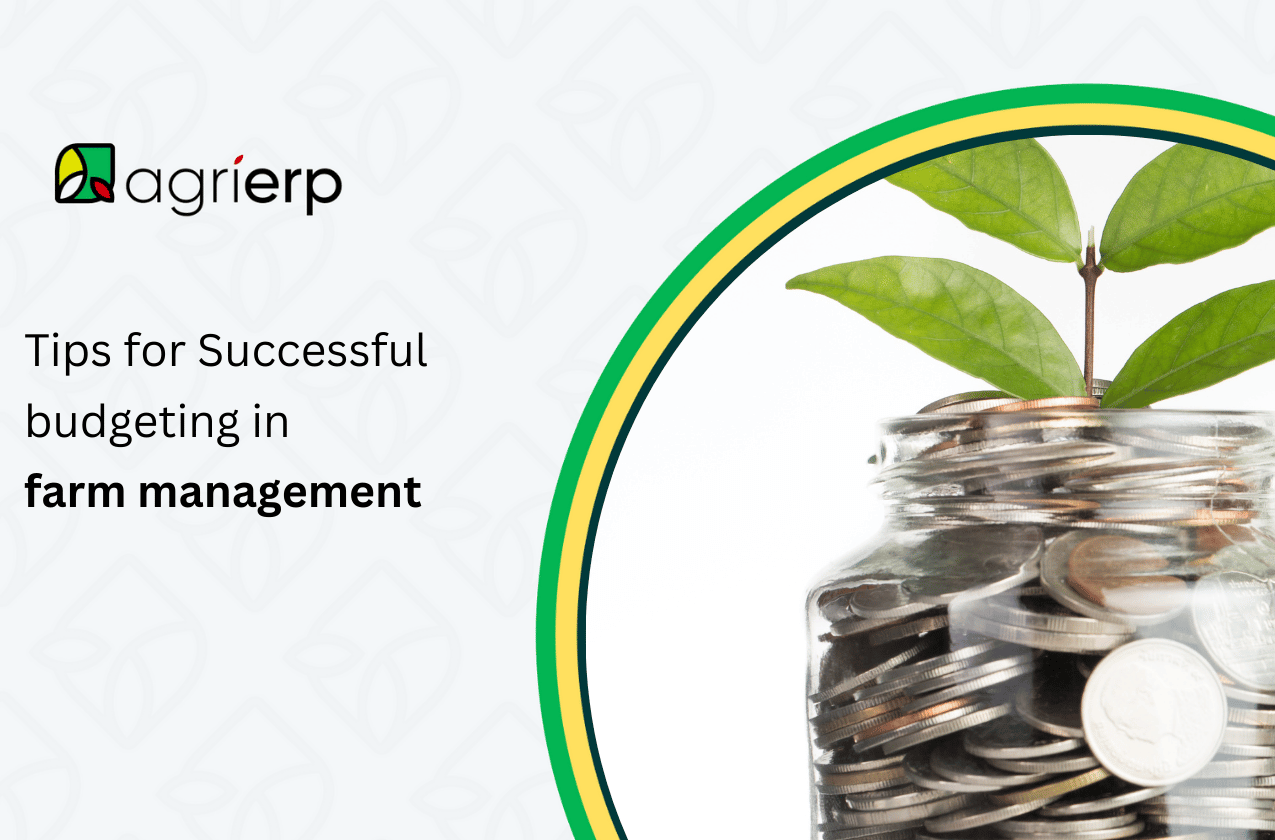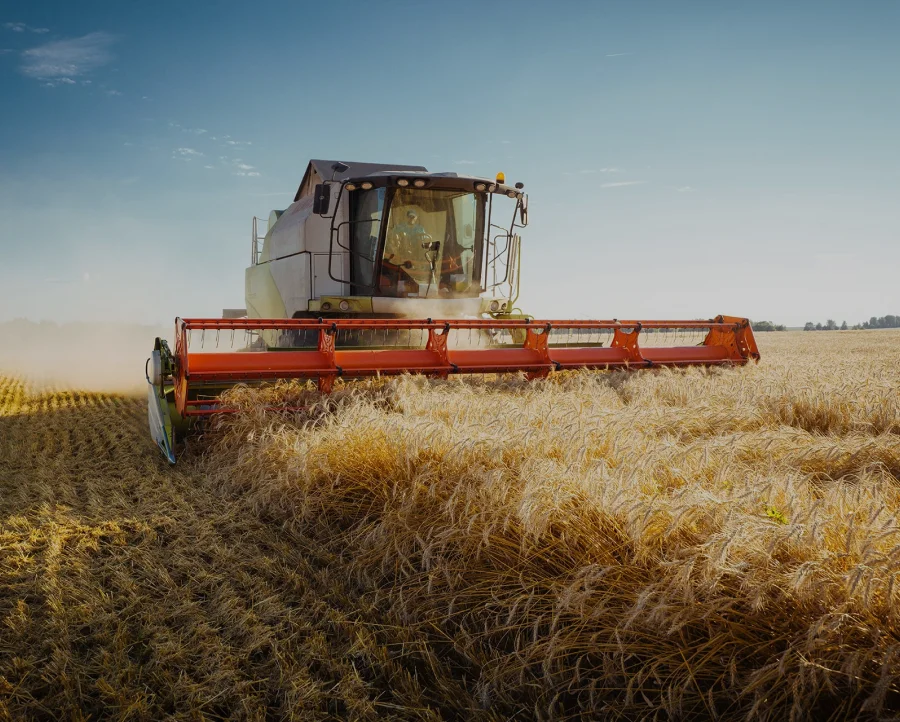Introduction
Effective budgeting in farm management is fundamental for nurturing and expanding your agribusiness. Agribusiness differs from other industries because it is more susceptible to weather, market pricing, and seasonal fluctuations. To create a solid financial strategy that guarantees stability and profitability, it is important to understand these challenges.
Budgeting in farm management involves planning for both predictable and unpredictable financial needs. Making a detailed plan that caters to both revenue and costs can help you stay financially stable and make intelligent decisions during farming cycles.
The Basics of Budgeting in Farm Management
In farm management, budgeting refers to developing a detailed financial plan, that estimates the earnings and expenses for a given period. This process helps agribusinesses in resource management, financial requirements planning, and decision-making.
The process of farming is cyclical by nature, with changing seasons and output cycles that have a big influence on budgeting. For example, planting, growing, and harvesting expenses and profits might vary significantly, requiring careful preparation and flexibility.
The cyclical nature of farming has an immense effect on budgeting. Different seasons bring different financial requirements and opportunities. For example, the planting season often requires huge initial investment in seeds, fertilizers, and labor, while the harvest season is expected to bring in most of the revenue. Effective budgeting must cater to these cycles, ensuring that funds are available when needed and that reserves are built up during profitable periods to cover unprofitable periods.
Key Components of an Agribusiness Budget
Fixed Costs
Fixed costs are the expenses that remain constant despite production levels, and cannot be avoided. These usually include the following:
- Land Payments: Monthly or annual payments for owned or leased land. These costs are mandatory and must be included in the budget regardless of crop yields or market conditions.
- Equipment: Expenses related to buying or maintaining equipment and tools. Frequent maintenance is essential to extend the life of equipment and prevent expensive breakdowns.
- Salaries: Regular wage for employees who work there permanently. Maintaining a knowledgeable and trustworthy staff is important, therefore reliable management of salary expenses is required to guarantee sustainability.
Variable Costs
Variable costs are the expenses that vary according to the level of production, they include the following:
- Seeds: Cost for purchasing a variety of seeds. This cost may change depending on the type of crop and the quality of seeds chosen.
- Fertilizers: Costs for soil enrichment products. These expenses can vary according to the type and amount of fertilizer needed for different crops and soil conditions.
- Fuel: Fuel for machinery and transportation. Fuel costs can fluctuate based on market prices and the amount of fieldwork required during different seasons.
Income Forecasting
In agriculture, revenue prediction includes methods such as the following:
- Historical Data Analysis: The past yield and sales data can be used to predict future income. This strategy helps in identifying trends and setting realistic financial targets.
- Market Trends: By remaining updated on the demand and market pricing for livestock and crops, you can adjust your plans, take advantage of good pricing, and prevent potential losses.
Modern Tools and Software for Budgeting
Using technology in farm management may greatly enhance the effectiveness of budgeting. Farm management software is one tool that helps with cash flow management, income forecasting, and tracking of expenses. Examples are the financial monitoring software MYOB and the agribusiness-specific budgeting tools from BNZ. these technologies offer immense benefits such as automated reporting, real-time data analysis, and enhanced decision-making.
Farm management software can simplify budgeting in farm management by providing a centralized platform for all financial information and processes. These tools can automatically generate reports, forecast future trends, and send alerts to you to regarding possible financial issues before they become aggravated. By using this software, you can save time and reduce the risk of human error.
Step-by-Step Guide to Creating a Farm Budget
Step 1: Review Historical Data
Analyze past financial performance to spot trends and devise a baseline for future forecasts. Historical data reveals past patterns of income and recurrent costs. Examining this data enables you to identify areas of improvement and what strategies have previously worked successfully.
While examining past data factors such as the following are considered:
- Previous Yields: Compare harvest from past years to spot trends and deviations.
- Market Prices: Review historical market prices for your products to understand pricing variations.
- Expense Patterns: Examine the past expenses incurred to identify consistent costs and areas where they can be reduced.
Step 2: Estimate Revenues
Based on the data gathered by analyzing the market trends, past yields, and expert forecasts, estimate the future revenue from your crops and livestock.
This step is important for setting realistic financial targets. You can plan expenses by using accurate revenue forecasting to make sure your budget reflects future revenues.
Use multiple sources of information to create a detailed revenue estimate, including:
- Industry Reports: Use reports from agricultural associations and market analysts.
- Expert Opinions: Consult with agronomists, economists, and other industry experts.
- Weather Forecasts: Consider the effect of forecasted weather patterns on your crops.
Step 3: Plan Expenditures
Plan and estimate future expenses. Include both variable and fixed costs in your plan. By carefully taking into account every possible expense, this thoughtful preparation helps to avoid budget overruns. Efficient resource allocation and spending priority are facilitated by careful preparation of expenses.
Group your expenditures into categories such as:
- Operating Costs: These include day-to-day expenses like seeds, fertilizers, and labor.
- Capital Expenditures: Capital expenses include long-term investments in equipment, infrastructure, and technology.
- Contingency Funds: These are the reserves for unexpected expenses and emergencies.
Step 4: Adjust for Seasonality
Make adjustments to your budget to be able to accommodate possible risks and seasonal variations. Creating backup plans for unforeseen circumstances like bad weather or market fluctuations is the objective of this step. Income and spending might fluctuate significantly with the seasons, so it’s important to be ready for these changes.
Consider creating multiple budget scenarios to be ready for handling different possible outcomes, including:
- Best-case scenario: Ideal conditions with maximum yields and favorable market prices.
- Worst-case scenario: Poor weather, low yields, and low market prices.
- Most Likely Scenario: A realistic scenario based on historical data and current forecasts.
Tips for Efficient Cash Flow Management
Managing cash flow effectively ensures liquidity for every phase of the agricultural cycle. Some of the techniques are:
- Maintaining a Reserve Fund: Set aside funds for unexpected expenses to avoid cash shortages. A reserve fund is a financial backup, that enables you to handle unforeseen costs without causing any disturbance to regular operations.
- Staggering Expenditures: Plan your spending such that it aligns with your income cycles. This includes reducing expenses during low-revenue periods. By matching expenditures with income, you can maintain a steady cash flow and avoid financial bottlenecks.
Some other methods to improve budgeting in farm management include:
- Negotiating Payment Terms: Collaborate with suppliers to extend payment terms during periods of low cash flow.
- Diversifying Income Streams: Generate additional revenue through other farm activities like agritourism or selling value-added products.
- Monitoring Cash Flow Regularly: Keep a keen eye on your cash flow statements to identify possible issues promptly.
Reducing Costs and Maximizing Profit
To boost profitability without compromising on quality, you may consider the following:
- Cost-Cutting Techniques: Adopt strategies like bulk buying, efficient use of resources, and waste reduction. While resource optimization enhances efficiency, bulk purchases can lower expenses per unit.
- Diversifying Income Sources: To stabilize finances, look at other revenue sources like agritourism, value-added goods, or alternative crops. Diversification lowers risk by reducing dependency on a single source of income.
Additional techniques to maximize profit include:
- Improving Operational Efficiency: Organize processes to reduce labor and input costs.
- Investing in Technology: Use modern agricultural technology to increase harvests and reduce costs.
- Exploring Niche Markets: Identify and target niche markets where you can demand higher prices for your products.
Monitoring and Adjusting the Budget
It’s critical to frequently evaluate your financial performance about the allocated budget. This practice allows you to:
- Adjust Forecasts: Update your income and expense predictions based on real-time financial data. Regular modifications ensure that your budget remains aligned and accurate.
- Reallocate Resources: Make the changes required to your budget allocations to tackle emerging needs or opportunities. Flexibility in your budget allows you to respond to changes in the market proactively.
Establish a schedule for monitoring your budget, such as:
- Monthly Reviews: Compare actual income and expenses against your budget every month.
- Quarterly Adjustments: Make important adjustments quarterly to reflect changes in your business environment.
- Annual Analysis: Conduct a thorough review at the end of each year to plan for the next year.
Case Studies
Successful farms that have effectively implemented good strategies for budgeting in farm management provide valuable lessons. For example:
Farm A:
By utilizing historical data and modern budgeting tools together, this farm was able to maximize its resource allocation. This enabled them to achieve a huge 20% increase in profits. They used software to track expenses in real time and modified their budget based on monthly performance reviews.
Farm B:
This farm implemented a mixed-income strategy. They reduced their dependency on a single crop and achieved financial stability even during market depressions. They explored niche markets and introduced value-added products, which boosted their total revenue.
Conclusion
For agribusinesses to be financially stable, effective budgeting in farm management is the key. It helps you while you manage the challenges of farming, manage expenses, and guarantee consistent revenue. Long-term success requires constant learning and adaptation to new financial management techniques.
You may create an effective financial strategy that promotes the expansion and sustainability of your agribusiness by using these budgeting recommendations. Keep in mind that creating an effective budget is a continuous process that has to be monitored and adjusted frequently. You can better predict and tackle the financial opportunities and problems that come with operating an agribusiness by remaining proactive and informed.
So are you ready to take your agribusiness to the highest level? Implement these budgeting strategies today and experience the difference they can make. For advanced tools and expert advice customized to your needs, visit agrierp.com. Let us help you maximize your financial potential and brighten your future by achieving sustainable growth!








